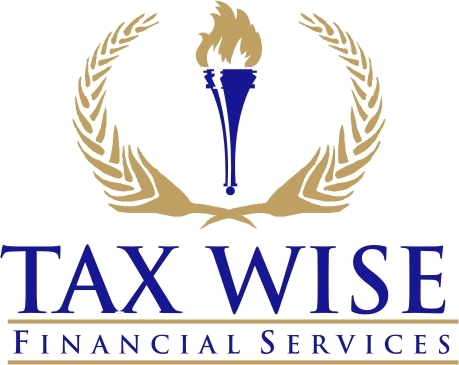
Can passive real estate income fund IRA contributions for more tax savings?
Understanding Traditional IRA Tax Savings
A Traditional IRA (Individual Retirement Account) is one of the most popular ways for people to save money for retirement while reducing their taxes. When you put money into a Traditional IRA, you can often deduct your contributions from your taxable income, which means you pay less in taxes today. This is called a tax-deferred investment, because you don’t pay taxes on your gains until you take the money out later in retirement.
For example, if you earn $60,000 a year and contribute $6,000 to a Traditional IRA, the government may only tax you as if you earned $54,000. That $6,000 grows in your IRA tax-free until you withdraw it after age 59½.
These Traditional IRA tax savings can make a big difference over time, especially when you pair them with smart tax saving investments like real estate or index funds. Many people don’t realize that even rental property income can play a role in boosting your retirement savings through an IRA.
How Rental Property Income Works
When you own a rental property, you earn money from tenants each month. That money is called rental income. However, you also have expenses, like maintenance, property taxes, mortgage interest, and insurance, that you can deduct from your total earnings. After these deductions, what’s left is your net rental income, which is the amount you actually earn from your investment property.
Rental income is considered passive income, meaning you earn it without working directly for it. It’s different from wages or salary income. Passive income can come from things like owning property, investing in dividend-paying stocks, or running a business you don’t manage daily.
But here’s where it gets interesting: while passive income from rental properties doesn’t directly count as “earned income” for IRA contributions, you can still use that income indirectly to build retirement wealth.
Can Passive Real Estate Income Fund IRA Contributions?
This is one of the most common questions investors ask:
Can I use my rental income to fund my Traditional IRA for more tax savings?
The answer is yes, indirectly.
Here’s why: IRS rules say you can only contribute “earned income” to an IRA. Earned income means money you get from working, such as wages, salary, or self-employment income. Passive rental income doesn’t qualify as “earned income.” However, if your rental properties generate positive cash flow, that money can free up other earned income you make from your job to be used for your IRA.
For example, if your rental property brings in $1,000 per month in profit, that money can help cover your monthly expenses. As a result, you might be able to contribute more of your regular paycheck to your Traditional IRA. You’re not directly contributing the rental income itself, but it allows you to redirect more of your earned income into tax saving investments.
This strategy helps you benefit from Traditional IRA tax savings on rental property income, even though the income itself isn’t directly placed into the account.
Combining Rental Property and IRA Tax Strategies
Smart investors often use both real estate and IRAs together to create a powerful tax-saving plan. Here are some ways this combination can work:
1. Use rental cash flow to increase IRA contributions
By using the rental profits to cover personal expenses, you can redirect more of your job income into your IRA. This approach increases your retirement savings while lowering your current tax bill.
2. Invest in real estate through a self-directed IRA
A self-directed IRA allows you to use your retirement funds to buy investment properties directly. In this case, all income and expenses from those properties stay inside the IRA. That means your rental property income grows tax-deferred until you withdraw it during retirement. This method can lead to significant Traditional IRA tax savings on rental property income over time.
However, self-directed IRAs have strict rules. You can’t personally use the property, and all transactions must go through the IRA custodian. Still, it’s a powerful way to combine tax saving investments with real estate.
3. Depreciation benefits
Real estate also provides depreciation deductions, which reduce your taxable rental income each year. When you combine depreciation benefits with IRA deductions, you could save thousands in taxes annually. Together, these strategies make tax saving investments even more powerful.
Tax Saving Investments That Complement Real Estate
While real estate is an excellent long-term investment, it’s not the only way to save on taxes. Here are other tax saving investments that pair well with rental property income:
- Traditional IRA contributions – Deductible contributions reduce taxable income today.
- 401(k) or SEP IRA plans – For self-employed investors, these offer higher contribution limits.
- Health Savings Accounts (HSAs) – These provide triple tax benefits for medical expenses.
- Roth IRA conversions – You pay taxes now but withdraw tax-free later, offering flexibility in retirement.
- Municipal bonds – These often pay tax-free interest income.
When combined, these tools can help create a balanced tax strategy where both your real estate investments and retirement accounts work together.
Real-Life Example: How It All Adds Up
Let’s look at a simple example.
Case Study: Alex’s Rental and IRA Strategy (2025)
Alex is a 40-year-old teacher earning $60,000 per year. She also owns a small rental property that earns $8,000 in net profit each year. Normally, her rental income is taxed, and she contributes $3,000 annually to her Traditional IRA.
But in 2025, Alex decides to take a new approach. She uses her rental income to cover personal expenses like utilities and groceries. This frees up $6,000 of her salary, allowing her to contribute the maximum amount to her Traditional IRA.
As a result:
- Her taxable income drops by $6,000, giving her Traditional IRA tax savings.
- Her rental property continues to grow in value, providing long-term wealth.
- She enjoys both passive real estate income and future retirement security.
By combining these strategies, Alex effectively uses her rental income to fund IRA contributions indirectly and unlocks more tax saving investments in 2025.
Common Mistakes to Avoid
Even though this strategy can be powerful, it’s important to avoid common mistakes:
- Mixing personal and IRA funds – Never use your personal money to pay for IRA-owned property expenses, or vice versa.
- Ignoring the “earned income” rule – Only wages or self-employment income can directly fund an IRA.
- Forgetting about withdrawal taxes – With a Traditional IRA, you’ll pay taxes when you withdraw funds later. Plan for this during retirement.
- Neglecting diversification – Don’t rely on only one type of investment. Combine tax saving investments like IRAs, real estate, and bonds for stability.
The Future of IRA Tax Savings and Real Estate in 2025
In 2025, more investors are discovering how to leverage Traditional IRA tax savings on rental property income. As real estate markets evolve and tax laws adjust for inflation, the opportunity to grow wealth through tax saving investments is bigger than ever.
Financial experts predict that self-directed IRAs will become even more popular as people look for flexible ways to diversify. Real estate, in particular, offers stability and long-term growth that complements traditional stock-based retirement accounts.
If you plan carefully, your passive real estate income can fund future IRA contributions and help secure your financial future. Even small adjustments today can lead to thousands of dollars in tax savings and a more comfortable retirement tomorrow.
Conclusion
In summary, while passive rental income itself can’t directly fund IRA contributions, it plays a key role in freeing up other earned income to invest in your Traditional IRA. By doing so, you can unlock more Traditional IRA tax savings on rental property income via tax saving investments.
The best part? You don’t need to be a financial expert to benefit. A little planning and consistency can help your money work smarter, not harder, for you in 2025 and beyond.


